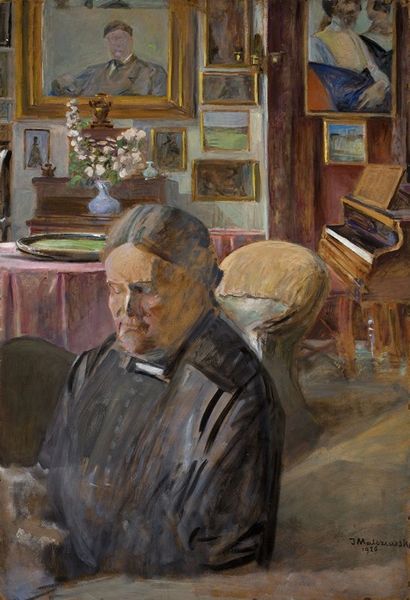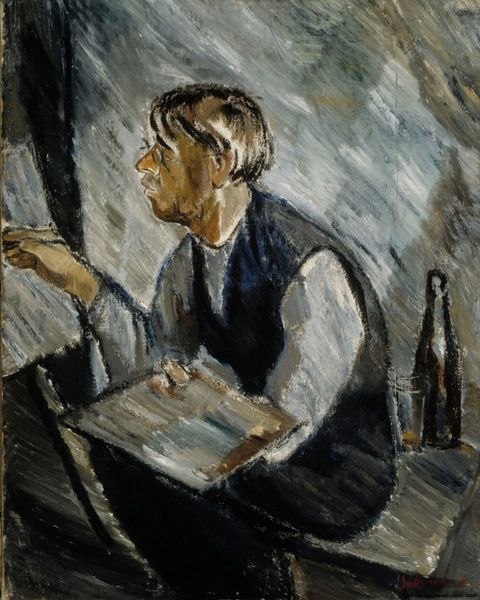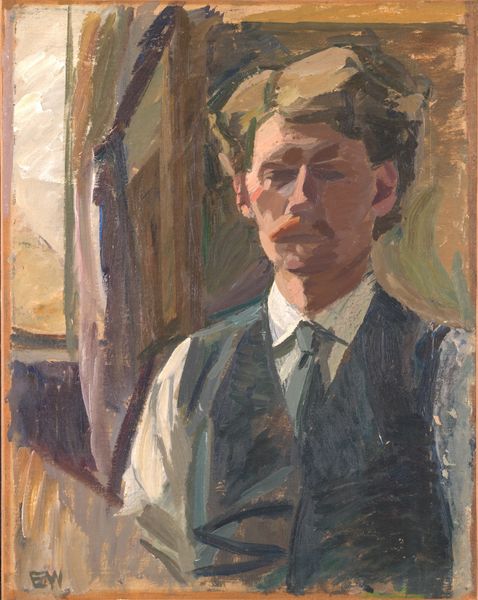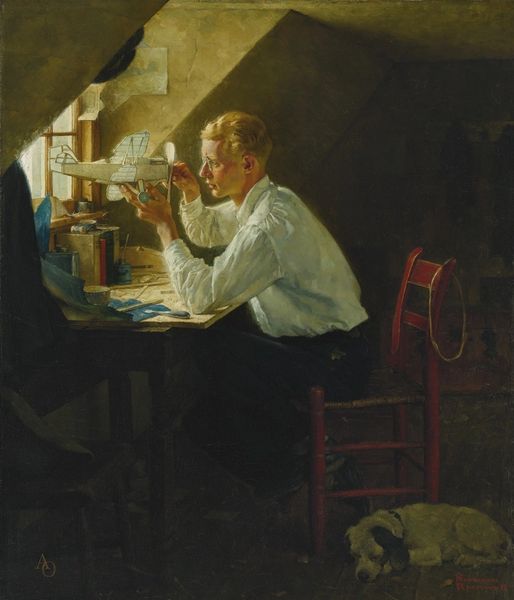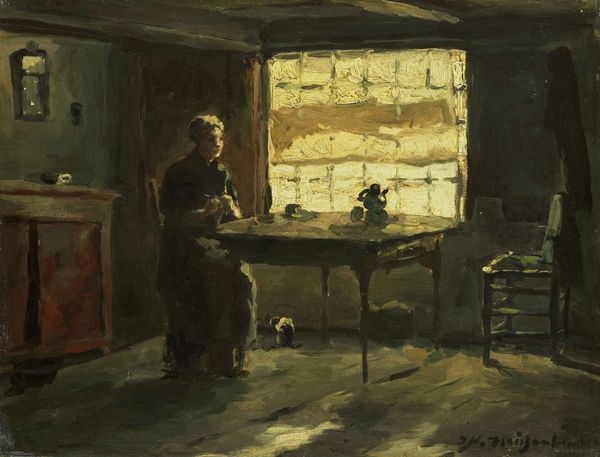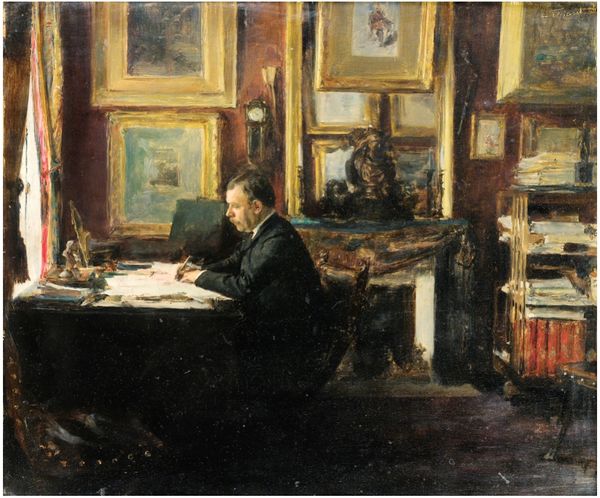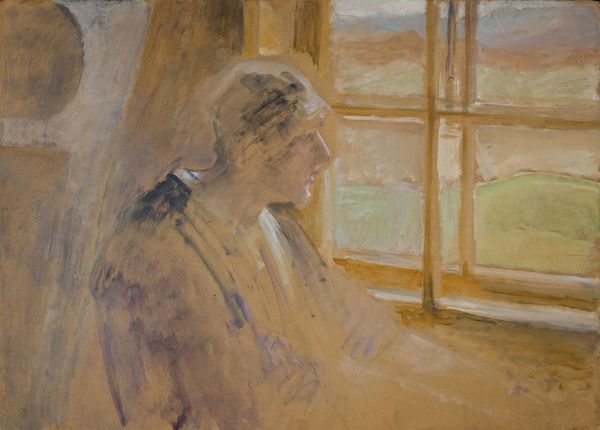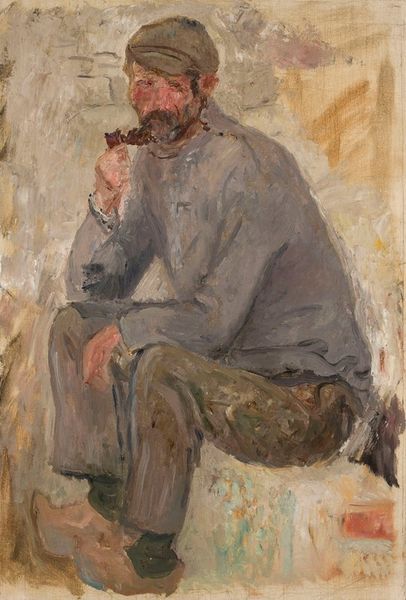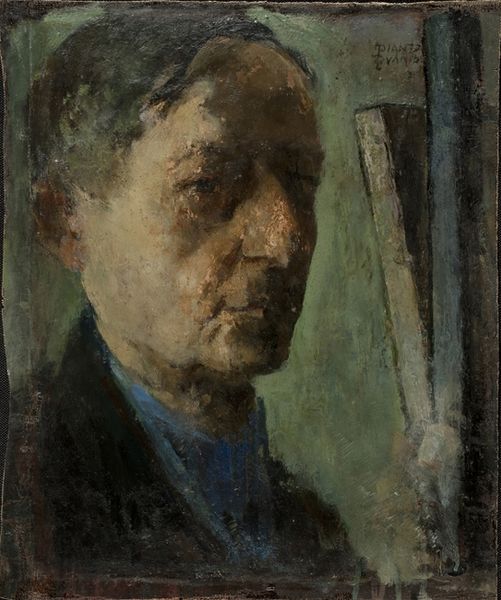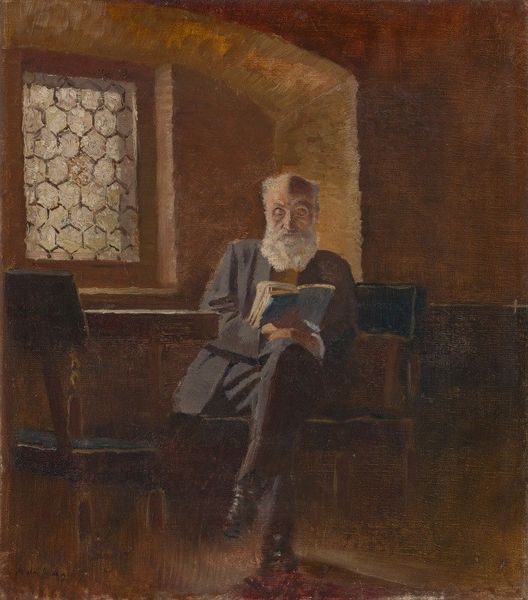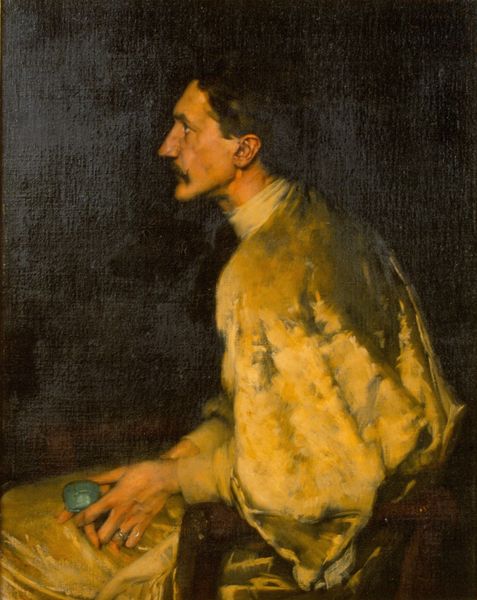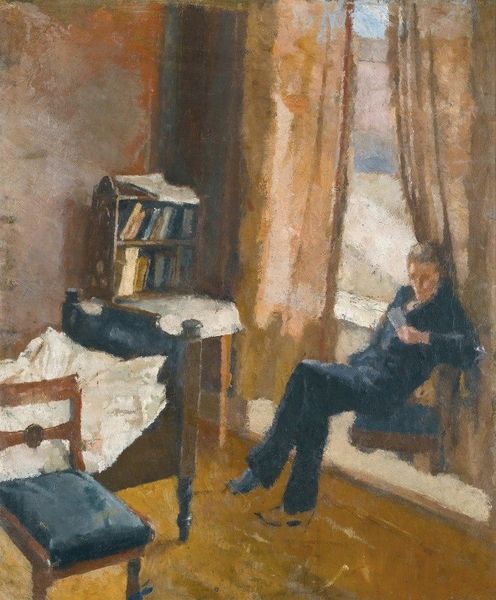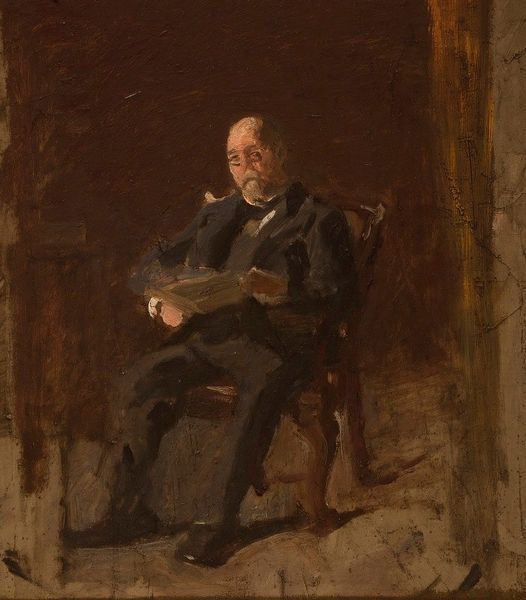
Dimensions: 29 3/4 x 29 3/4 in. (75.57 x 75.57 cm) (sight)31 5/16 x 31 5/16 in. (79.53 x 79.53 cm) (outer frame)
Copyright: No Copyright - United States
Editor: Here we have Philip Little’s oil on canvas, *Portrait of Robert Koehler*, from 1910. I’m immediately struck by its subdued palette. What do you see in Little’s composition, and how would you describe its formal qualities? Curator: Note the calculated arrangement of light and shadow. Little employs a limited color palette, favoring muted browns and grays, to direct our gaze. Observe how the light strategically falls upon Koehler's face, highlighting the texture and form, while the rest of the scene remains softer. Consider the interplay between the figure and the ground. Editor: It seems like there is some interplay in brushstrokes as well, yes? Curator: Indeed, the visible brushstrokes contribute significantly to the overall effect. They add a sense of immediacy and tactility. Focus on the artist's control over the medium. See how the strokes become shorter and more agitated near Koehler's hands, contrasting with the more subdued strokes defining the backdrop. Does this deliberate variation influence your interpretation? Editor: Yes, definitely. It gives a sense of dynamism and movement to an otherwise still scene. What do you think it signifies? Curator: From a purely formalist perspective, the specific meaning isn’t my immediate concern. However, we can analyze the tension created by the formal arrangement: The soft background gives a spatial quality, while brushwork creates dynamic movement in the foreground. How these elements harmonize contributes to the success of the composition. Editor: That’s so helpful. I often look for the narrative, but analyzing the formal elements first offers a more objective lens. I learned to focus on lines and shades. Thank you for illuminating those choices! Curator: A deep consideration of artistic form reveals artistic choices which we may miss by hunting only after narratives or cultural information. Keep the power of structure and materiality in mind when experiencing art.
Comments
minneapolisinstituteofart about 2 years ago
⋮
The subject here, Robert Koehler, directed the Minneapolis School of Fine Arts (now the Minneapolis College of Art and Design) from 1893 to 1914. An artist himself, he was fiercely committed to American art and organized annual exhibitions that brought the best contemporary artists to Minneapolis. When Philip Little came to town to mount a solo exhibition, he also painted Koehler’s portrait. Skillfully balancing masses and forms, darkness and light, he shows Koehler sitting in his office (located in the public library) making an etching. Outlines of office and hotel buildings in 1910 Minneapolis are visible through the window.
Join the conversation
Join millions of artists and users on Artera today and experience the ultimate creative platform.
